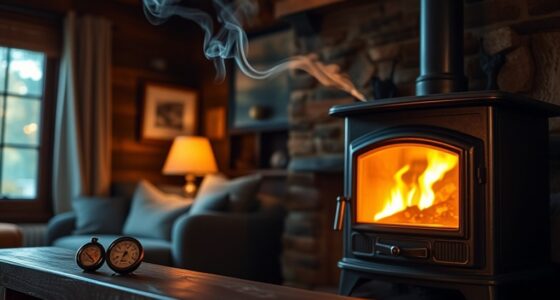As an experienced enthusiast of wood stoves, I am excited to share essential knowledge about installing wood stoves in metal garages.
Imagine cozy evenings in your garage, surrounded by the warm crackle of a wood fire. But before you embark on this project, there are important safety considerations, ventilation requirements, insulation and heat protection, clearances and spacing, as well as chimney installation and maintenance to address.
Let’s dive into the details and ensure your wood stove setup is both functional and safe.
Key Takeaways
- Fireproof flooring and fire-resistant insulation are essential for preventing accidental fires and heat damage in metal garages with wood stoves.
- Carbon monoxide detectors should be installed in the garage to detect the colorless and odorless gas produced by wood stoves.
- Adequate ventilation, including inlet and outlet vents and a properly insulated chimney or flue, is crucial for safe operation and the removal of smoke and gases.
- Following safety guidelines, maintaining clearances from combustible materials, and proper installation and maintenance of the wood stove and chimney are important for ensuring a safe and efficient wood stove installation in metal garages.
Safety Considerations
I need to carefully consider all the safety aspects before installing a wood stove in my metal garage. One of the most important safety measures is to ensure that the flooring around the wood stove is fireproof. This is crucial because wood stoves can generate high temperatures, and having fire-resistant flooring will help prevent any accidental fires or damage.
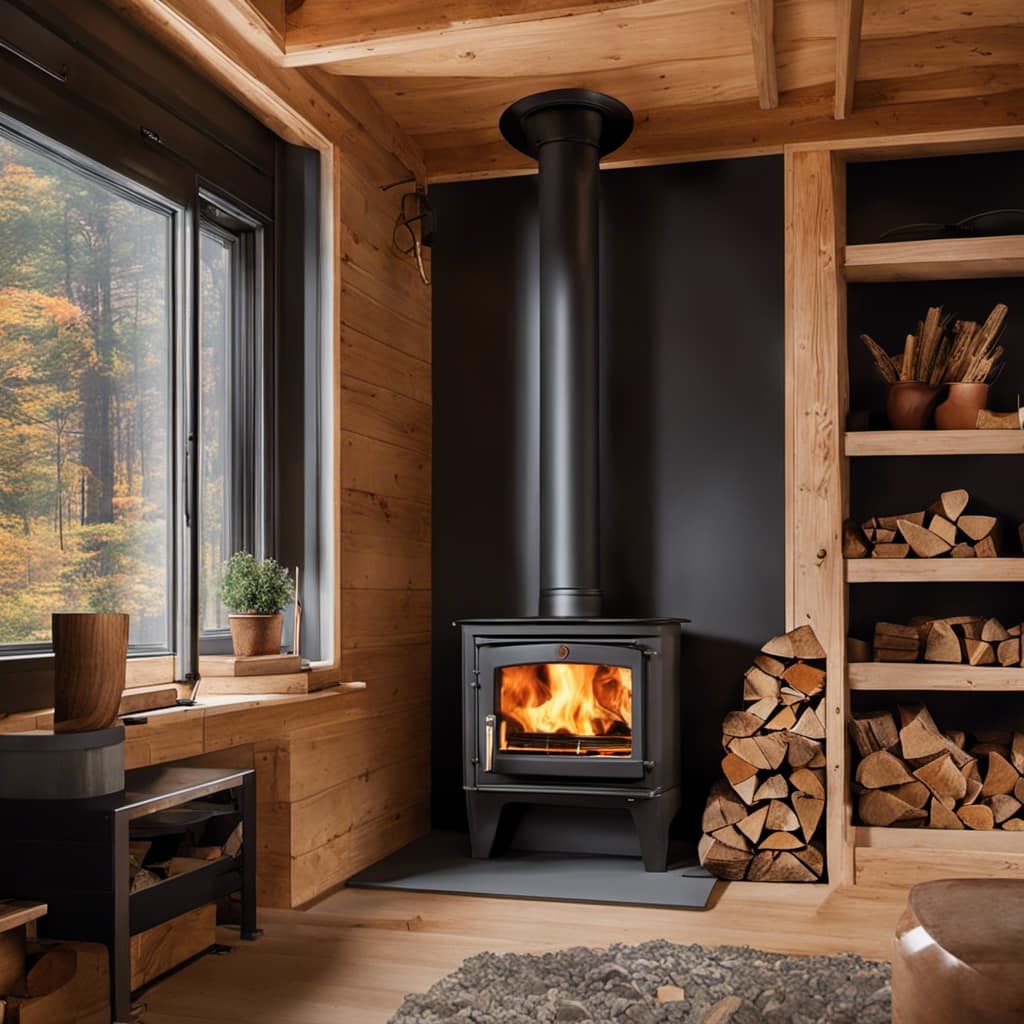
Additionally, it’s essential to install carbon monoxide detectors in the garage. Wood stoves produce carbon monoxide, which is a colorless and odorless gas that can be extremely dangerous if not detected. Carbon monoxide detectors will alert me if the levels of this gas become hazardous, providing an early warning system to protect me and my family.
Ventilation Requirements
There are several ventilation requirements that need to be met when installing a wood stove in a metal garage. Proper airflow is crucial to ensure the safe operation of the wood stove and to prevent the accumulation of harmful gases. When it comes to ventilation installation, there are a few key factors to consider.
Firstly, it’s important to have both inlet and outlet vents to allow for the exchange of air. This helps maintain a steady flow of fresh air into the garage and allows for the removal of smoke and gases produced by the wood stove. The size and placement of these vents should be determined based on the size of the garage and the heating capacity of the stove.
Secondly, it’s recommended to install a chimney or flue to further facilitate the removal of smoke and gases. The chimney should be properly insulated and have a sufficient height to create a strong draft, ensuring the efficient evacuation of combustion byproducts.
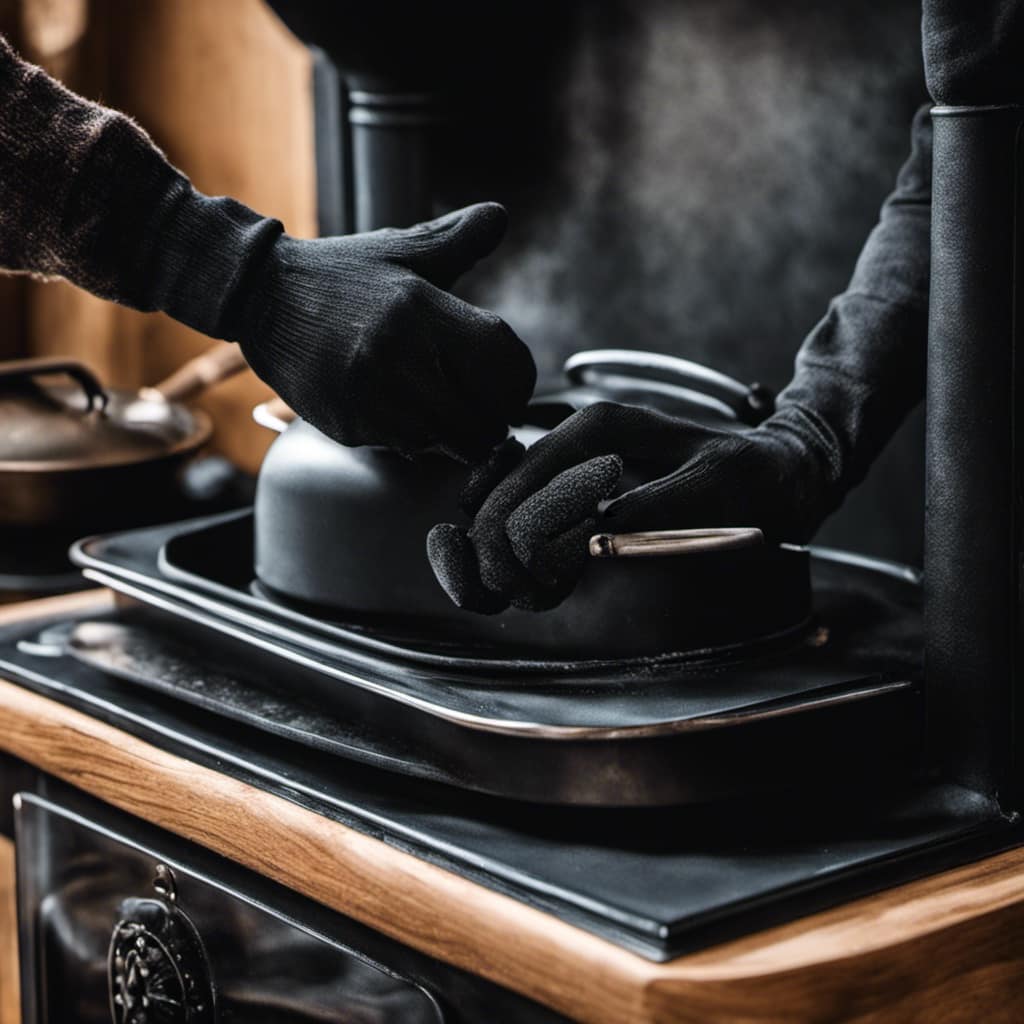
Lastly, it’s essential to properly seal any gaps or cracks in the garage walls or ceiling to prevent air leaks. This helps maintain the desired airflow and prevents the entry of cold air from outside.
Insulation and Heat Protection
The insulation in my garage provides the necessary heat protection for the wood stove. When installing a wood stove in a metal garage, it’s crucial to consider fireproof materials and ensure proper installation.
Fireproof materials, such as fire-resistant insulation, are essential to prevent the risk of fire and protect the structure from heat damage. This insulation should have a high fire resistance rating and be capable of withstanding extreme temperatures.
Additionally, proper installation is key to ensure the wood stove operates safely and efficiently. This includes following the manufacturer’s guidelines, using appropriate venting systems, and ensuring proper clearance from combustible materials.
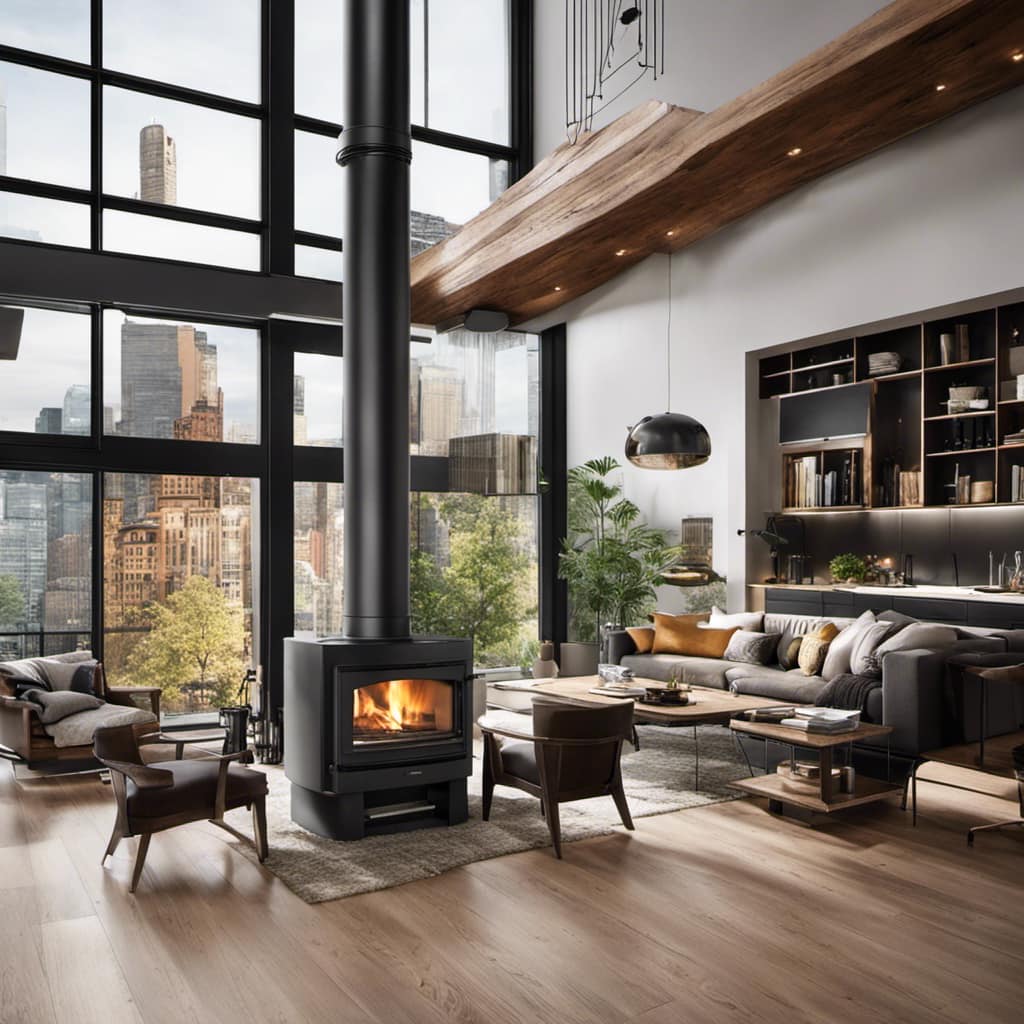
Clearances and Spacing
When installing a wood stove in my metal garage, I need to ensure that I clear out any combustible materials and space them accordingly to prevent any potential fire hazards. Here are four important clearance requirements to consider for a safe and efficient equipment installation:
Maintain proper clearance from combustible materials: It’s crucial to keep a safe distance between the wood stove and any flammable objects. The specific clearance requirements may vary depending on local building codes, but a general rule of thumb is to have at least 36 inches of clearance around the stove.
Adequate spacing for ventilation: Proper ventilation is essential to prevent the buildup of carbon monoxide and ensure efficient combustion. Make sure there’s enough space around the stove to allow for proper air circulation and venting.
Clearances from walls and ceilings: It’s important to follow the manufacturer’s guidelines for clearances from walls and ceilings. These clearances ensure that heat doesn’t damage the surrounding structures and reduce the risk of fire.
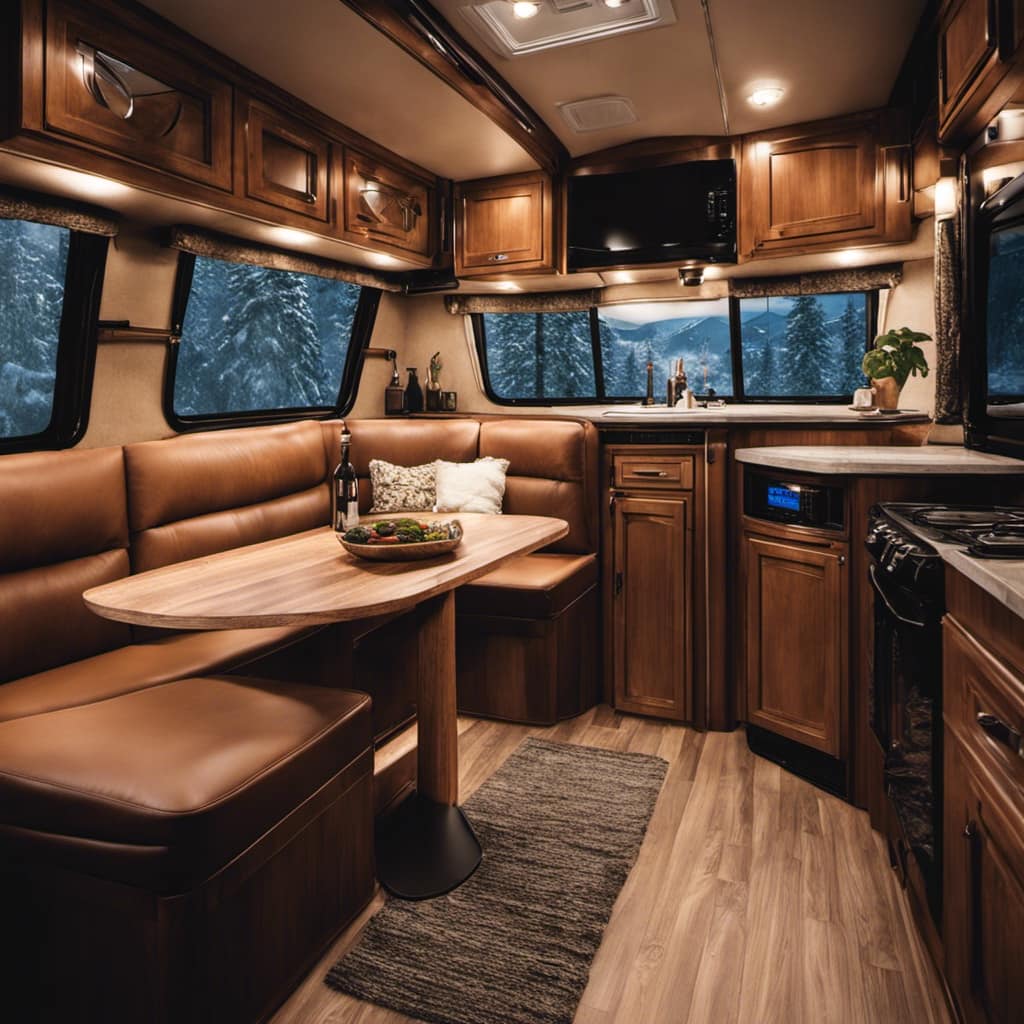
Floor protection: A non-combustible floor protection is necessary to protect the floor from the intense heat generated by the wood stove. This can be achieved by using a suitable material, such as a hearth pad, that meets the required specifications.
Chimney Installation and Maintenance
I am currently learning about the importance of regular chimney cleaning and the proper installation of a chimney to ensure the safe and efficient operation of my wood stove. When it comes to proper stove placement, it’s crucial to consider factors such as clearances and spacing.
It’s essential to follow the manufacturer’s guidelines for the appropriate distance between the stove and any combustible materials. This will help prevent the risk of fire and ensure optimal performance.
Additionally, choosing the right wood stove model is key. Factors to consider include the size of the space you want to heat, the desired fuel efficiency, and any specific features you may need. It’s important to research and consult with professionals to select a wood stove that meets your needs and ensures safe operation.
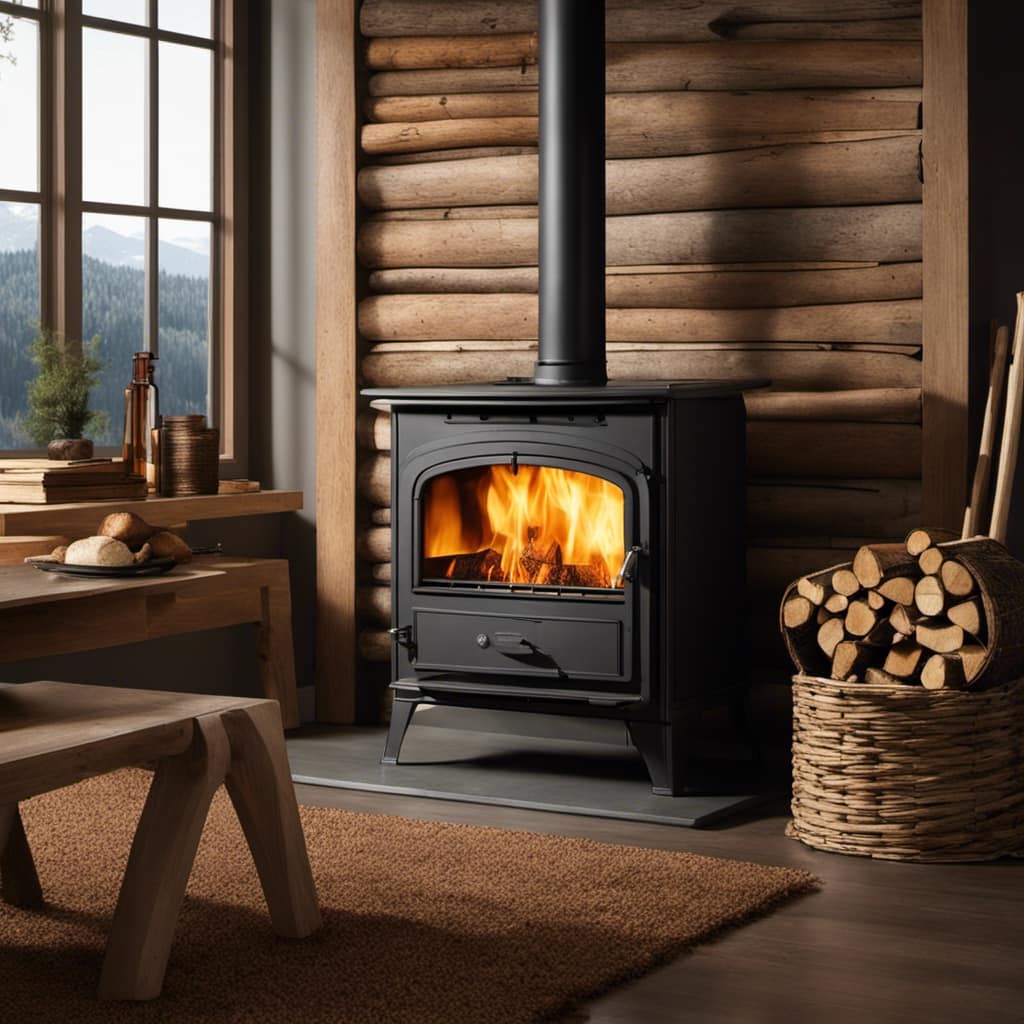
Regular chimney cleaning is also crucial for maintaining the efficiency of the stove and reducing the risk of chimney fires. A professional chimney sweep should be hired to inspect and clean the chimney at least once a year.
Can I Use the Same Materials to Install a Wood Stove in a Metal Garage and a Shed?
When it comes to wood stove installation backing options in a metal garage and a shed, it’s essential to consider the differences in materials and fire safety regulations. While a metal garage may require non-combustible materials like cement board, a shed may allow for more flexible backing options like sheet metal.
Frequently Asked Questions
What Are the Electrical Requirements for Installing a Wood Stove in a Metal Garage?
To install a wood stove in a metal garage, you’ll need to consider the electrical requirements. Ensure you have a dedicated circuit with the correct voltage and amperage for the stove. Consult a licensed electrician for proper installation.
Can I Install a Wood Stove in a Metal Garage Without a Chimney?
I’ve installed wood stoves in metal garages before. It’s important to consider ventilation options, especially if you don’t have a chimney. You’ll need to ensure proper airflow to prevent smoke buildup.
Are There Any Specific Building Codes or Permits Required for Installing a Wood Stove in a Metal Garage?
Building permits and safety regulations are essential when installing a wood stove in a metal garage. It’s important to comply with local codes to ensure proper ventilation, fire safety, and structural integrity.
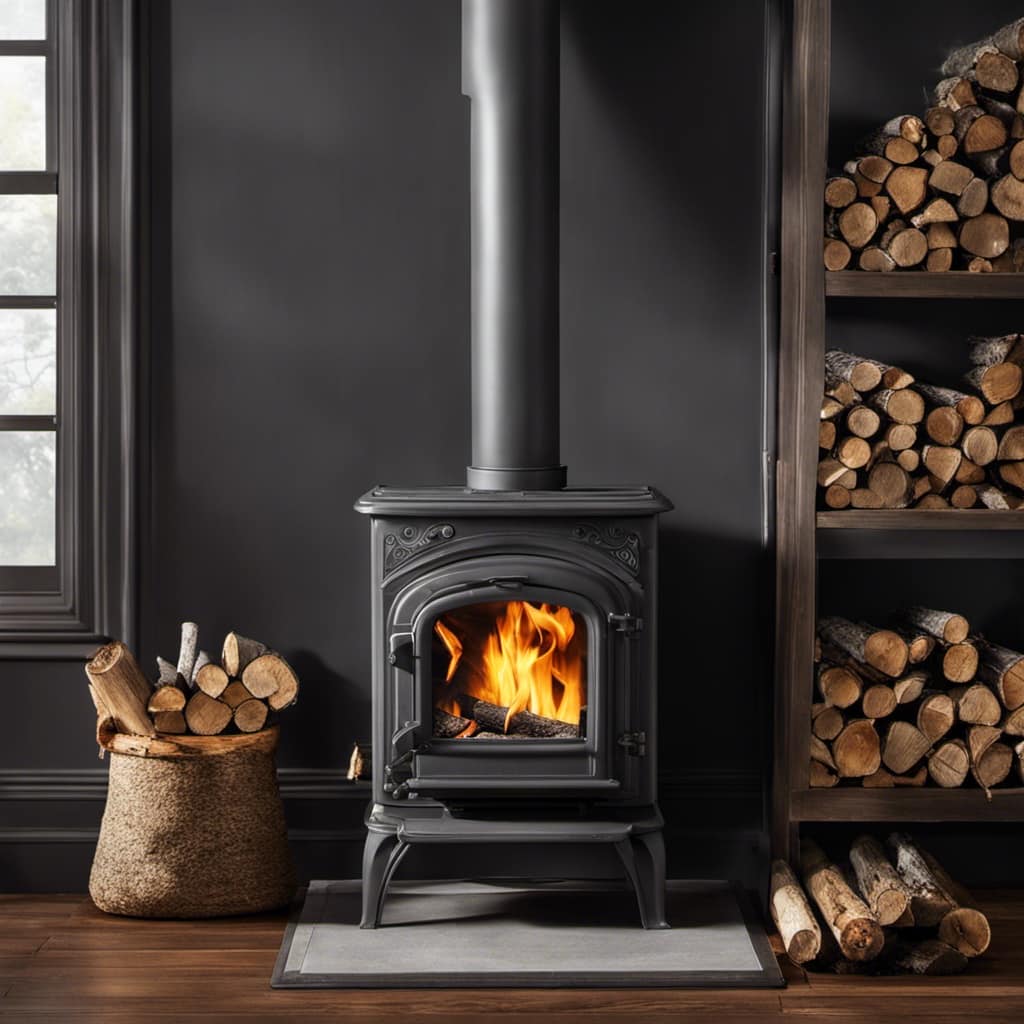
Can I Use the Wood Stove in My Metal Garage as the Primary Heating Source for My Entire Home?
I can use the wood stove in my metal garage as the primary heating source for my entire home. However, I need to consider safety considerations and ensure that the installation meets all necessary requirements.
Are There Any Restrictions or Limitations on the Type of Wood I Can Burn in a Wood Stove Installed in a Metal Garage?
When installing a wood stove in a metal garage, it is important to consider the type of wood you burn. Certain woods can produce excessive smoke or sparks, so it’s crucial to choose hardwoods and follow safety precautions.
Conclusion
In conclusion, when installing a wood stove in a metal garage, it’s crucial to prioritize safety. This can be achieved by considering several factors.
Firstly, ventilation requirements should be carefully evaluated. Adequate ventilation is necessary to prevent the buildup of dangerous gases, such as carbon monoxide. Proper ventilation can be achieved through the installation of vents or fans.

Secondly, insulation and heat protection should be addressed. Metal garages tend to have poor insulation, which can lead to heat loss. Adding insulation to the walls and ceiling can help retain heat and improve energy efficiency. Additionally, heat shields or fire-resistant materials should be installed near the stove to protect surrounding surfaces from excessive heat.
Clearances and spacing must also be taken into account. The wood stove should be placed at a safe distance from any combustible materials, such as walls or stored items. Clearances specified by the manufacturer should be strictly followed to prevent fire hazards.
Furthermore, proper chimney installation and maintenance are essential. The chimney should be installed according to local building codes and regulations. Regular cleaning and inspection of the chimney are necessary to remove creosote buildup and ensure proper airflow.
Just like a well-built bridge supports heavy traffic, a properly installed wood stove ensures the efficient and secure heating of your metal garage. By following these guidelines, you can enjoy the warmth and comfort of a wood stove while keeping your space safe.
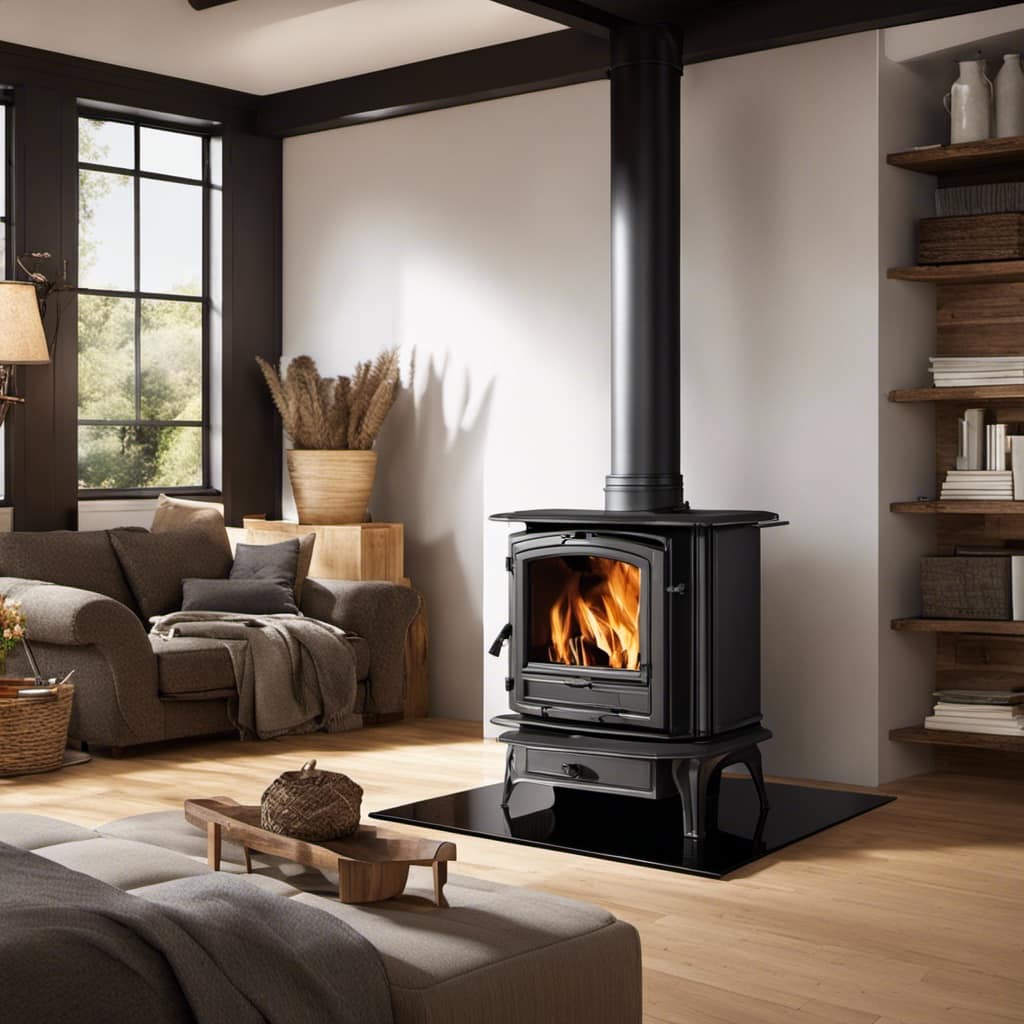
Growing up surrounded by the vast beauty of nature, Sierra was always drawn to the call of the wild. While others sought the comfort of the familiar, she ventured out, embracing the unpredictable and finding stories in the heartbeat of nature.
At the epicenter of every remarkable venture lies a dynamic team—a fusion of diverse talents, visions, and passions. The essence of Best Small Wood Stoves is crafted and refined by such a trio: Sierra, Logan, and Terra. Their collective expertise has transformed the platform into a leading authority on small wood stoves, radiating warmth and knowledge in equal measure.







